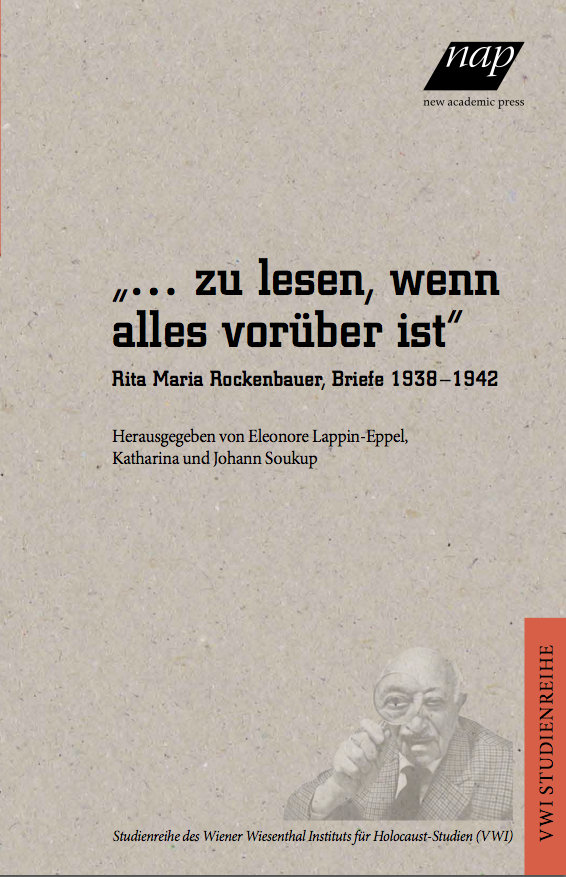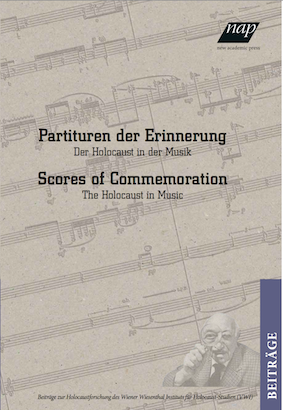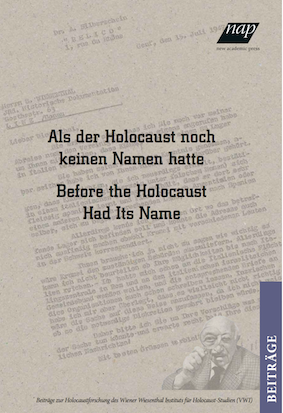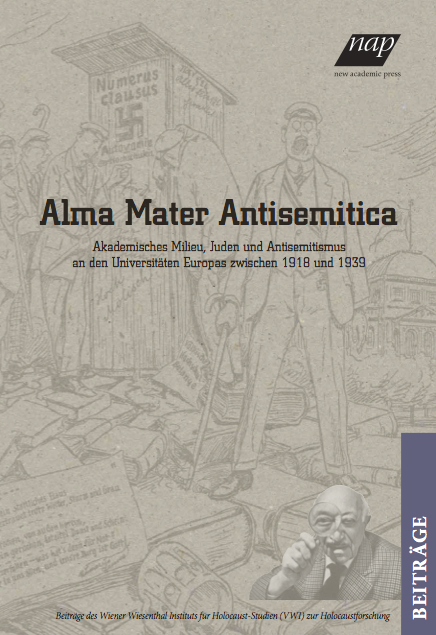 This article seeks to revise the commonly held scholarly assumption about the supposed incompatibility of the Croat Peasant Party and the Ustaša Movement. While important differences existed between the two organisations, they also had much in common. This article considers the areas in which they overlapped while also examining the extent to which both groups displayed certain Fascist tendencies. Moving beyond the popular notion that the Ustaša Movement was comprised of a fringe group of radicals who enjoyed no popular support, this article analyses the proclamations of many non-elite Croat nationalists who simultaneously supported both the Ustaša and the Croat Peasant Party.
This article seeks to revise the commonly held scholarly assumption about the supposed incompatibility of the Croat Peasant Party and the Ustaša Movement. While important differences existed between the two organisations, they also had much in common. This article considers the areas in which they overlapped while also examining the extent to which both groups displayed certain Fascist tendencies. Moving beyond the popular notion that the Ustaša Movement was comprised of a fringe group of radicals who enjoyed no popular support, this article analyses the proclamations of many non-elite Croat nationalists who simultaneously supported both the Ustaša and the Croat Peasant Party.
Editorial
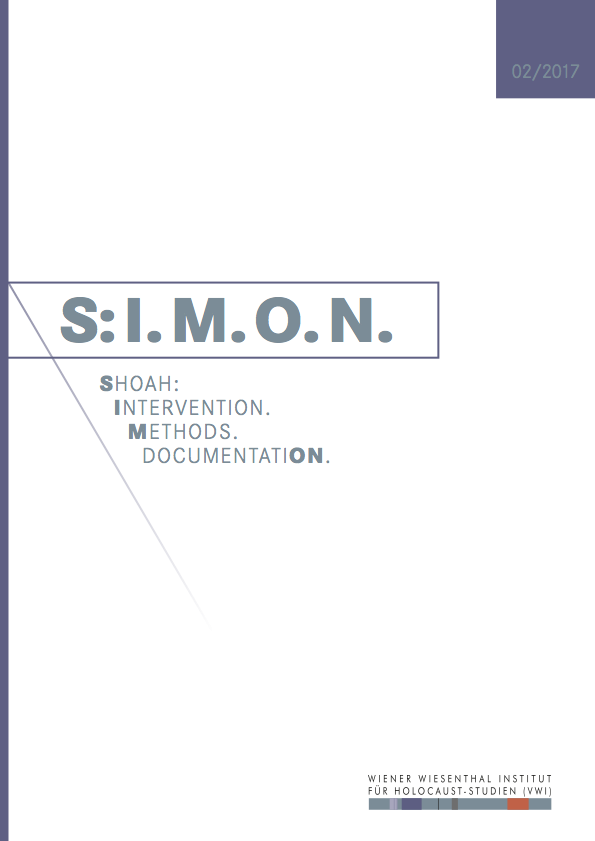 S:I.M.O.N. is an e-journal of the Vienna Wiesenthal Institute for Holocaust Studies (VWI). It appears twice a year in English and German language. S:I.M.O.N. aims at both a transnational and comparative history of the Holocaust and Jewish Studies in Central and Eastern Europe within the broader contexts of the European history of the 20th and 21st century, including its prehistory, consequences and legacies as well as the history of memory.
S:I.M.O.N. is an e-journal of the Vienna Wiesenthal Institute for Holocaust Studies (VWI). It appears twice a year in English and German language. S:I.M.O.N. aims at both a transnational and comparative history of the Holocaust and Jewish Studies in Central and Eastern Europe within the broader contexts of the European history of the 20th and 21st century, including its prehistory, consequences and legacies as well as the history of memory.
S:I.M.O.N. serves as a forum for discussion of various methodological approaches. The journal especially wishes to strengthen the exchange between researchers from different scientific communities and to integrate both the Jewish history and the history of the Holocaust into the different “national” narratives. It also lays a special emphasis on memory studies and the analysis of politics of memory. S:I.M.O.N. uses a double-blind review system, which means that both the reviewer’s and the author’s identities are concealed from each other hroughout the review process.
Shoah: The journal deals with the history of the Shoah from multidisciplinary, transnational and comparative perspectives. It seeks to integrate studies on Jews as well as on other groups of victims of the Holocaust, especially on Roma, and of so far less researched regions of (East) Central and (South) Eastern Europe.
Intervention. The journal reports on research projects and their transmission into public events. It also informs about current educational and remembrance programs.
Methods. The journal serves as a forum for the discussion of methodological approaches as, for instance, the everyday history, oral history, gender history, the history of violence, anti-Semitism and racism and the theory of memory and memory politics.
DocumentatiON. The journal contributes to critical approaches on using and interpreting archival materials in the 21st century.
Download the current issue S:I.M.O.N. 2017/2.
Articles
 This article outlines the principal directions of my research: It focuses on the interplay of antisemitism and fascism in the ideology of the legionary movement in inter-war Romania as well as on the virtual consensus on antisemitism that was established in the 1930s as a result of the support for the movement received from most of the representatives of the ‘new generation’ of Romanian intellectuals. This consensus was pivotal in desensitising the general population towards the plight of Romanian Jews and making it possible for the discriminatory measures to gradually escalate into outright policies of extermination. Thus my research demonstrates the responsibility held by the legionary movement even though they were not directly involved in the Romanian wartime Holocaust perpetrated by the Antonescu regime: The legionary movement nevertheless promoted an antisemitic discourse that was much more extreme than that of all its predecessors and contemporaries, advocating a radical exclusion with genocidal overtones. Moreover, while being as ideological and abstract as its Nazi counterpart, legionary antisemitism posited religion rather than race as the basis for the exclusion of the Jews in line with the ideology of a movement that presented itself as ‘spiritual’ and ‘Christian’. The legionary exclusion based on religion proved as violent and murderous as the one based on race, both before and during the movement‘s time in power. As such, the evidence from the Romanian case study can serve to nuance and even challenge existing interpretations that identify only racist antisemitism as genocidal.
This article outlines the principal directions of my research: It focuses on the interplay of antisemitism and fascism in the ideology of the legionary movement in inter-war Romania as well as on the virtual consensus on antisemitism that was established in the 1930s as a result of the support for the movement received from most of the representatives of the ‘new generation’ of Romanian intellectuals. This consensus was pivotal in desensitising the general population towards the plight of Romanian Jews and making it possible for the discriminatory measures to gradually escalate into outright policies of extermination. Thus my research demonstrates the responsibility held by the legionary movement even though they were not directly involved in the Romanian wartime Holocaust perpetrated by the Antonescu regime: The legionary movement nevertheless promoted an antisemitic discourse that was much more extreme than that of all its predecessors and contemporaries, advocating a radical exclusion with genocidal overtones. Moreover, while being as ideological and abstract as its Nazi counterpart, legionary antisemitism posited religion rather than race as the basis for the exclusion of the Jews in line with the ideology of a movement that presented itself as ‘spiritual’ and ‘Christian’. The legionary exclusion based on religion proved as violent and murderous as the one based on race, both before and during the movement‘s time in power. As such, the evidence from the Romanian case study can serve to nuance and even challenge existing interpretations that identify only racist antisemitism as genocidal.
SWL-Reader
 The network of camps that eventually covered almost all of Europe under the management of the SS was a firm component of the national socialist system of terror and defined the Nazi regime in its essence. From the British channel island Alderney to the Soviet Union and from the Baltic to Greece, there was hardly a place in the Nazi sphere of power without one form or another of such a camp. The names of the large concentration and extermination camps have today become synonyms for Nazi state terror, and are perfect metaphors of terror, dehumanisation and racist mass murder. Paradoxically, however, this development at the same time saw the erasure of the traces of those countless small camps in the system: the network that made the terror possible in the first place down to its last branch. They have been lost from Europe's cultural memory.
The network of camps that eventually covered almost all of Europe under the management of the SS was a firm component of the national socialist system of terror and defined the Nazi regime in its essence. From the British channel island Alderney to the Soviet Union and from the Baltic to Greece, there was hardly a place in the Nazi sphere of power without one form or another of such a camp. The names of the large concentration and extermination camps have today become synonyms for Nazi state terror, and are perfect metaphors of terror, dehumanisation and racist mass murder. Paradoxically, however, this development at the same time saw the erasure of the traces of those countless small camps in the system: the network that made the terror possible in the first place down to its last branch. They have been lost from Europe's cultural memory.
Wolfgang Benz provides a systematic presentation of this knowledge, making it accessible again on the basis of the nine volume standard oeuvre on the history of Nazi concentration camps which he published together with Barbara Distel.
Events
Zoltán Halasi
Duschehubka
 This text is the penultimate chapter of Zoltán Halasi's book Út az üres éghez (Road to an Empty Sky). With this work, which was first published in Hungarian, the author created a singular memorial to Polish-Jewish culture and its destruction. Setting out from the Yiddish Holocaust poem Dos lid funm ojsgehargetn jidischen folk by Itzhak Katzenelson, Halasi records what was lost in the Shoah in the course of nineteen compelling chapters. He takes on the grab of an art historian, a literary critic and a travel guide when he reports about a wooden synagogue and the Jewish quarter in Warsaw. In the role of a German banker, he illuminates the aims of the Nazi monetary policies, as a writer of SS brochures he highlights the absurdity of racism. Depicting a Selektion in the Warsaw ghetto, he shows the grim logic of compulsive acts in catastrophic situations, draws an image of the running of the extermination camp Treblinka. The cynical words of two German policemen provide an insight into the rituals of mass executions and introduce us to the craft of murder. The final chapter is an interplay of slithers of narrative by Jewish children on the run and by those who helped and hid them that borders on the unbearable.
This text is the penultimate chapter of Zoltán Halasi's book Út az üres éghez (Road to an Empty Sky). With this work, which was first published in Hungarian, the author created a singular memorial to Polish-Jewish culture and its destruction. Setting out from the Yiddish Holocaust poem Dos lid funm ojsgehargetn jidischen folk by Itzhak Katzenelson, Halasi records what was lost in the Shoah in the course of nineteen compelling chapters. He takes on the grab of an art historian, a literary critic and a travel guide when he reports about a wooden synagogue and the Jewish quarter in Warsaw. In the role of a German banker, he illuminates the aims of the Nazi monetary policies, as a writer of SS brochures he highlights the absurdity of racism. Depicting a Selektion in the Warsaw ghetto, he shows the grim logic of compulsive acts in catastrophic situations, draws an image of the running of the extermination camp Treblinka. The cynical words of two German policemen provide an insight into the rituals of mass executions and introduce us to the craft of murder. The final chapter is an interplay of slithers of narrative by Jewish children on the run and by those who helped and hid them that borders on the unbearable.
The chapter reproduced on the following pages has three parts: Part one is a Treblinka railway station master's report to the Polish Home Army. In the second part, a former Jewish detainee who managed to escape from the extermination camp Treblinka gives a literary treatment of his arrival at the camp. The final part consists of an inner monologue by the Treblinka extermination camp's director of administration.
The book will shortly be published in Polish at the Nisza publishing company in Warsaw. The German-speaking public was first presented with the work on December 1, 2015 at the Simon Wiesenthal Conference 2015. The German translation by Éva Zádor and Heinrich Eisterer is in progress.
Filip Erdeljac: Crawling Towards Fascism. Peasant Politics and Croat Nationalism in Interwar Yugoslavia
„... zu lesen, wenn alles vorüber ist“
Rita Maria Rockenbauer, Briefe 1938 –1942
Wien 2014
Partituren der Erinnerung.
Der Holocaust in der Musik
Scores of Commemoration.
The Holocaust in Music
Wien 2015
Before the Holocaust Had Its Name. Early Confrontations of the Nazi Mass Murder of the Jews
Wien 2016
Akademisches Milieu, Juden und Antisemitismus an den Universitäten Europas zwischen 1918 und 1939
Academic Milieu, Jews and Antisemitism at European Universities between 1918 and 1939
Wien 2016



